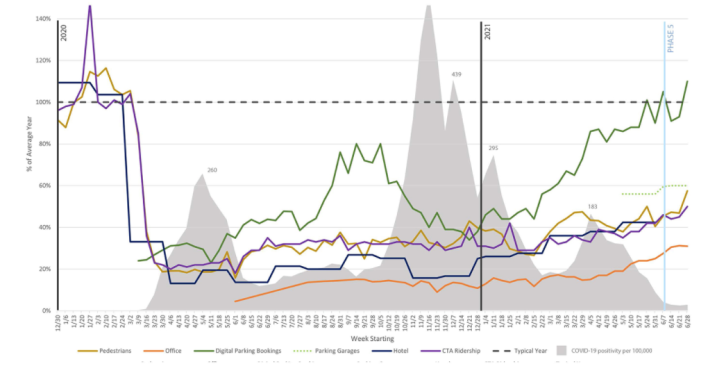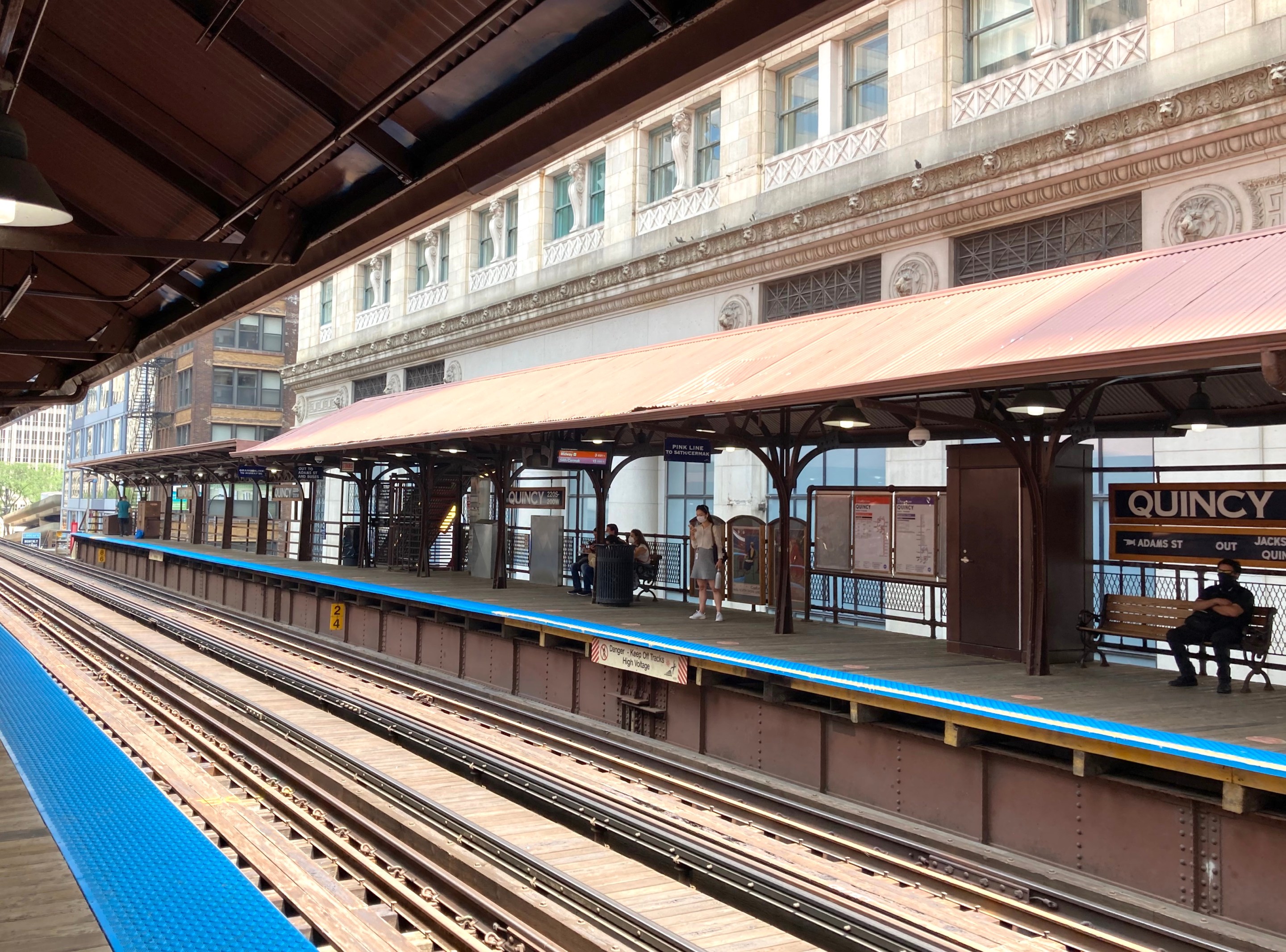Streetsblog has been following monthly recovery reports from the Chicago Loop Alliance, which has been tracking activity in the Loop throughout the COVID-19 pandemic. The numbers have shown an alarming astronomical rise in levels of parking downtown, levels that are dramatically higher than the comparatively static metrics for CTA ridership, pedestrian activity, and occupancy rates of office buildings and hotels.
Last month, Chicago hit a milestone, with digital parking bookings (on surface streets and lots as opposed to in parking garages) exceeding pre-pandemic levels, while CTA ridership bumped along around 40 percent of normal. The June recovery report was recently released, showing an upward trend of tourist and commuter activity, with increased walking, CTA ridership, and a return of workers to downtown as COVID restrictions lift. I wish that was the biggest story here.
However, the Loop Alliance chart below shows a green parking line of doom, which dwarfs all other metrics and continues its trajectory skyward, hitting a stomach-churning 110 percent of 2019 levels last month. The CLA says this metric mostly applies to tourists and drivers making one-off trips to the Loop. In May, the report started to include parking garage occupancy to better measure commuter vehicle trips. That (dotted green) line, while not as high as the digital parking levels, is still double that of office occupancy, at 60 percent of the same time in 2019. Assuming more workers will return to the Loop throughout the summer and fall, it’s reasonable to expect parking garage occupancy levels will continue to rise as well.

While business, entertainment and tourism are in the early stages of a likely long and gradual recovery from the pandemic (barring renewed restrictions from the Delta variant), motor vehicle traffic has more than recovered – if you can call more dangerous, congested streets and increased air pollution recovery. It’s imperative that public transportation in Chicago be safe, affordable, accessible, and appealing, and that Chicago continue to invest a multi-modal transit system.
And even if our city provides good alternatives to a post-pandemic driving explosion, it’s going to take an arsenal of carrots and sticks to actually get folks out of their cars and onto buses, bikes and the 'L'. Employers could offer subsidized Ventra cards to workers returning to the office and, when possible, offer flex time for so that employees who are concerned about about crowding on trains and buses can avoid rush periods. CTA’s promotional summer fares for one-, three- and seven-day passes are a good start, but perhaps programs like this should be extended. Notably, Metra's new all-day pass has been unexpectedly successful.
Building more protected bike lanes on arterial roads would increase rider safety and encourage more people to bike downtown. As for sticks, New York is on the brink of instituting the nation’s first congestion pricing system to reduce car traffic during peak hours (notably, people making under $60k per year are exempt from the toll); Chicago would do well to consider similar, potentially revenue-raising means of encouraging a shift to public transportation. The carmaggeddon these Chicago Loop Alliance reports forecasted months ago is here.




